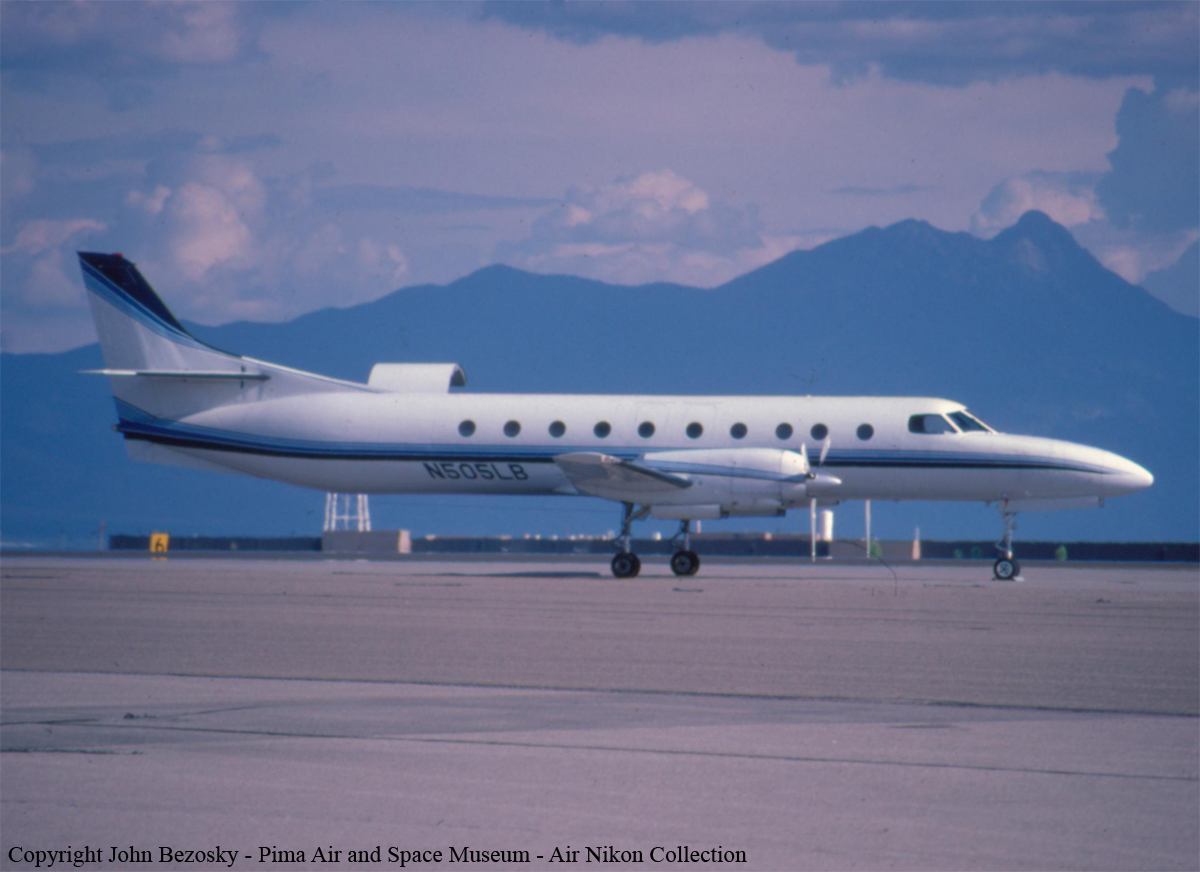Crash of a Swearingen SA226TC Metro II in Wilmington: 2 killed
Date & Time:
Apr 23, 1987 at 1935 LT
Registration:
N505LB
Survivors:
No
Schedule:
Wilmington - Lumberton
MSN:
TC-202
YOM:
1972
Crew on board:
2
Crew fatalities:
Pax on board:
0
Pax fatalities:
Other fatalities:
Total fatalities:
2
Captain / Total hours on type:
1860.00
Aircraft flight hours:
7667
Circumstances:
The right engine failed during takeoff immediately after rotation 3,000 feet down the 7,002 feet runway 16. The pilot continued the flight and the landing gear remained extended. The unauthorized pilot rated passenger made transmissions to the tower. Witnesses reported that the aircraft reached approximately 150 feet then descended into trees 20° to the right of runway centerline and 3,000 feet south of the airport. The pre-1979 3rd stage stator assembly in the right engine did not have the latest manufacture welding process/inspection and failed causing the uncontained turbine failure. Instruments in the wreckage indicated that an undeterminable loss of electrical power occurred at the time of engine failure. Performance data indicated that a safe landing could have been made on the remaining runway past the point of engine failure. Both occupants were killed.
Probable cause:
Occurrence #1: loss of engine power (partial) - mech failure/malf
Phase of operation: takeoff - initial climb
Findings
1. (f) turbine assembly, nozzle retention - inadequate
2. (f) acft/equip, inadequate design - manufacturer
3. (f) turbine assembly, turbine wheel - burst
4. (f) electrical system - undetermined
----------
Occurrence #2: forced landing
Phase of operation: descent - emergency
----------
Occurrence #3: in flight collision with object
Phase of operation: descent - uncontrolled
Findings
5. (f) object - tree(s)
6. (c) in-flight planning/decision - poor - pilot in command
7. (f) pressure induced by others - pilot in command
8. (c) emergency procedure - not followed - pilot in command
9. (c) all available runway - not used - pilot in command
----------
Occurrence #4: in flight collision with terrain/water
Phase of operation: descent - uncontrolled
Findings
10. Terrain condition - ground
Phase of operation: takeoff - initial climb
Findings
1. (f) turbine assembly, nozzle retention - inadequate
2. (f) acft/equip, inadequate design - manufacturer
3. (f) turbine assembly, turbine wheel - burst
4. (f) electrical system - undetermined
----------
Occurrence #2: forced landing
Phase of operation: descent - emergency
----------
Occurrence #3: in flight collision with object
Phase of operation: descent - uncontrolled
Findings
5. (f) object - tree(s)
6. (c) in-flight planning/decision - poor - pilot in command
7. (f) pressure induced by others - pilot in command
8. (c) emergency procedure - not followed - pilot in command
9. (c) all available runway - not used - pilot in command
----------
Occurrence #4: in flight collision with terrain/water
Phase of operation: descent - uncontrolled
Findings
10. Terrain condition - ground
Final Report:


